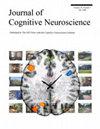Effects of Vergence Eye Movement Planning on Size Perception and Early Visual Processing
IF 3.1
3区 医学
Q2 NEUROSCIENCES
引用次数: 0
Abstract
Our perception of objects depends on non-oculomotor depth cues, such as pictorial distance cues and binocular disparity, and oculomotor depth cues, such as vergence and accommodation. Although vergence eye movements are always involved in perceiving real distance, previous studies have mainly focused on the effect of oculomotor state via “proprioception” on distance and size perception. It remains unclear whether the oculomotor command of vergence eye movement would also influence visual processing. To address this question, we placed a light at 28.5 cm and a screen for stimulus presentation at 57 cm from the participants. In the NoDivergence condition, participants were asked to maintain fixation on the light regardless of stimulus presentation throughout the trial. In the WithDivergence condition, participants were instructed to initially maintain fixation on the near light and then turn their two eyes outward to look at the stimulus on the far screen. The stimulus was presented for 100 msec, entirely within the preparation stage of the divergence eye movement. We found that participants perceived the stimulus as larger but were less sensitive to stimulus sizes in the WithDivergence condition than in the NoDivergence condition. The earliest visual evoked component C1 (peak latency 80 msec), which varied with stimulus size in the NoDivergence condition, showed similar amplitudes for larger and smaller stimuli in the WithDivergence condition. These results show that vergence eye movement planning affects the earliest visual processing and size perception, and demonstrate an example of the effect of motor command on sensory processing.辐辏眼动规划对大小感知和早期视觉处理的影响
我们对物体的感知取决于非眼球运动深度线索(如图像距离线索和双眼视差)和眼球运动深度线索(如辐辏和调节)。虽然辐辏眼动始终参与实际距离的感知,但以往的研究主要集中于通过 "本体感觉 "的眼动状态对距离和大小感知的影响。至于辐辏眼球运动的眼球运动指令是否也会影响视觉处理,目前仍不清楚。为了解决这个问题,我们在距离被试者 28.5 厘米处放置了一盏灯,并在距离被试者 57 厘米处放置了一个用于呈现刺激的屏幕。在 "无发散 "条件下,被试者被要求在整个试验过程中,无论刺激是否呈现,都要始终保持固定在灯光上。在 "有发散 "条件下,受试者被要求先保持对近处灯光的凝视,然后将两只眼睛转向外侧,注视远处屏幕上的刺激物。刺激物出现的时间为 100 毫秒,完全在眼球发散运动的准备阶段。我们发现,与 "无发散 "条件相比,"有发散 "条件下受试者感知到的刺激物更大,但对刺激物大小的敏感度更低。在无发散条件下,最早的视觉诱发成分 C1(峰值潜伏期为 80 毫秒)随刺激大小而变化,而在有发散条件下,较大和较小刺激的振幅相似。这些结果表明,辐辏眼动规划会影响最早的视觉处理和大小感知,并展示了运动指令对感觉处理的影响。
本文章由计算机程序翻译,如有差异,请以英文原文为准。
求助全文
约1分钟内获得全文
求助全文
来源期刊
CiteScore
5.30
自引率
3.10%
发文量
151
审稿时长
3-8 weeks
期刊介绍:
Journal of Cognitive Neuroscience investigates brain–behavior interaction and promotes lively interchange among the mind sciences.

 求助内容:
求助内容: 应助结果提醒方式:
应助结果提醒方式:


